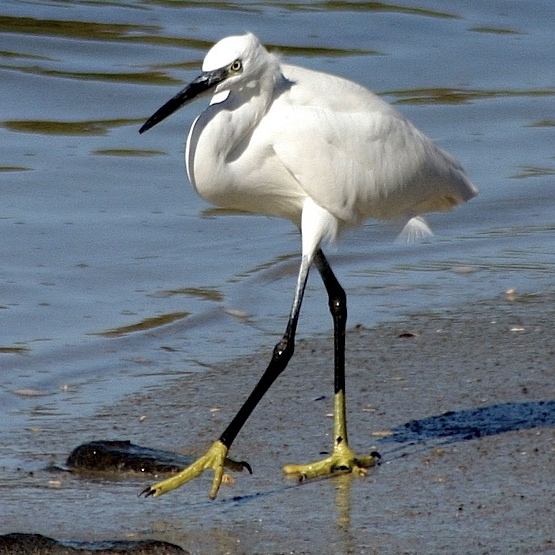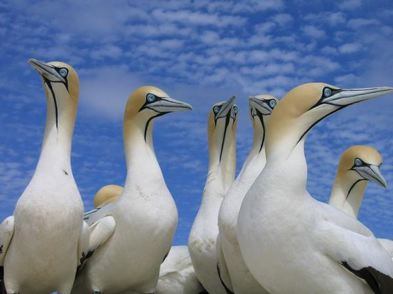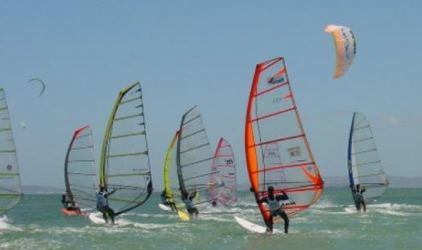Travel Tips
Great Cape Escapes: Blooms, Birds, Beaches, and Barbecues in Langebaan, South Africa
 In part three of her road trip through South Africa, Lynn Langway explores the coastal gem of Langebaan. With its rugged landscape and ample outdoor activities, the Western Cape is a longtime favorite local getaway, often overlooked by foreign visitors.
In part three of her road trip through South Africa, Lynn Langway explores the coastal gem of Langebaan. With its rugged landscape and ample outdoor activities, the Western Cape is a longtime favorite local getaway, often overlooked by foreign visitors.
Read on to learn about her Great Cape Escape adventures.
The intrepid traveler who visits Langebaan on South Africa’s rugged Western Coast soon absorbs some crucial local lessons:
- The flamingos you see just off the front lawn of your hotel are NOT made of plastic.
- You ARE expected to brake for any leopard tortoises napping in the middle of the road and move them gently to the roadside.
- It IS possible to consume a 10-course seafood barbecue without feeling stuffed—if you take three hours.
Long beloved by South Africans for its deserted Atlantic beaches and wildflowered wetlands, the West Coast is often skipped by foreign tourists. But it’s well worth the short trip—about an hour from Cape Town—for the peerless windsurfing, sailing, mussels and crayfish, plus beautiful shorebirds by the thousands.
If you’re headed to Langebaan, don’t miss Tips on Driving Through South Africa’s Countryside.
 My husband and I came to the wild West Coast for the birds and the beach barbecue, and were delighted by both. We stayed in Langebaan, 72 miles north of Cape Town.
My husband and I came to the wild West Coast for the birds and the beach barbecue, and were delighted by both. We stayed in Langebaan, 72 miles north of Cape Town.
Our charming inn, the Farmhouse Hotel, occupied a restored Cape Dutch farmstead that overlooks the turquoise Langebaan Lagoon and its fiery sunsets. The glorious West Coast National Park starts just beyond the hotel, and we were welcomed by the sight of 40 pale pink flamingos browsing the offshore sandbar as we checked in.
Despite some condo construction on its borders, the 74,000-acre park remains uncrowded and unspoiled. During South Africa’s spring months (August-October), the wetlands and meadows burst into a riot of orange, purple, yellow, and red blooms.
Find more great outdoor adventures in Great Cape Escapes: Whale-Watching in Hermanus, South Africa
At the height of wildflower season, in August and September, you can hike the park’s wildest section, where zebra and antelope roam. Spring also brings as many as 65,000 wading birds—pelicans, plovers, egrets and more—swinging in from as far away as Siberia.
 Check in at the Geelbek Information Center on the park’s southern edge, and walk the boardwalks that thread the marshlands to viewing shelters. Here you can spy on a wide variety of shy creatures—more than 300 bird species have been spotted—without disturbing them. Or take a cup of traditional rooibos (red bush) tea made from local herbs at the cafe, and watch dozens of bright yellow Cape Weavers spin their elaborate hanging nests in the trees.
Check in at the Geelbek Information Center on the park’s southern edge, and walk the boardwalks that thread the marshlands to viewing shelters. Here you can spy on a wide variety of shy creatures—more than 300 bird species have been spotted—without disturbing them. Or take a cup of traditional rooibos (red bush) tea made from local herbs at the cafe, and watch dozens of bright yellow Cape Weavers spin their elaborate hanging nests in the trees.
Admire more blooms and birds in the former fishing villages that dot this coastline: Lambert’s Bay, where thousands of golden-headed Cape Gannets breed on Bird Island; picturesque Paternoster, with its whitewashed cottages and excellent hiking; lively Darling, where you can catch the kitschy satire of Evita Se Perron, South Africa’s answer to Dame Edna.
Check out more urban adventures in Western Cape’s capital in our Off the Brochure Travel Guide: Cape Town, South Africa.
 For active enjoyment of the expansive sand and sea, rent surfboards or learn to windsurf or kitesurf—Cape Sports Center offers rentals and guided lessons .
For active enjoyment of the expansive sand and sea, rent surfboards or learn to windsurf or kitesurf—Cape Sports Center offers rentals and guided lessons .
But perhaps the most singular slice of the West Coast is served up by the three-hour beachfront barbecue—“braii” in Afrikaans—at Langebaan’s colorful Die Strandloper restaurant. Named for the tribe that occupied this land ages before the Dutch, this ramshackle outdoor establishment on the shore of Saldana Bay is cobbled together from old rowboats, nets, and whatever driftwood the tide leaves behind. Iron pots bubble on cooking fires, and seafood grills over charcoal.
Guests start with savory mussels simmered in wine or garlic butter, or both; their shells serve as cutlery for the rest of the meal, which is dished out on paper plates. Next come seven more delicious courses, all perfectly cooked, including smoked angelfish, broiled crayfish, and swordfish-like grilled snoek, tender inside a crust of apricot preserves.
Get more ideas for a Western Cape vacation with Great Cape Escapes: The Culinary Charms of Franschhoek, South Africa.
With periodic drink breaks—BYO or buy a beer or glass of wine at the tumbledown bar—it really is possible to power through a total of 10 courses (counting the thick slabs of fresh farmhouse bread, jacket potatoes and biscuits baked in the coals) for R190 (about $26).
Like marathon coaches, the staff encourages the diners: “Eat a little, drink a lot, not too much bread!” A strolling guitarist plays Afrikaans folksongs, and the multiracial, multinational crowd mingles between courses; at a weekday lunch, we met travelers from Zimbabwe, Namibia, and New Zealand.
We also learned one final lesson: that “moerkoffie” coffee brewed over the fire in the traditional West Coast manner is NOT good to the last drop unless you like the taste of wood ashes; local cooks filter the grounds to the bottom by plunging a burning stump into the pot.
By Lynn Langway for PeterGreenberg.com. Lynn Langway is an award-winning editor, writer and journalism teacher. Her articles about travel, business and lifestyle topics have appeared in The New York Times, Washington Post, Money, The Nation, and other publications. Visit Lynn on the Web at www.lynnlangway.com.
Related articles on PeterGreenberg.com:
- Great Cape Escapes: The Culinary Charms of Franschhoek, South Africa
- Great Cape Escapes: Whale-Watching in Hermanus, South Africa
- Great Cape Escapes: Tips for Driving in South Africa
- Africa Travel section
- Off the Brochure Travel Guide: Cape Town, South Africa
- Watch Your Wallet: These Monkeys Mean Business












